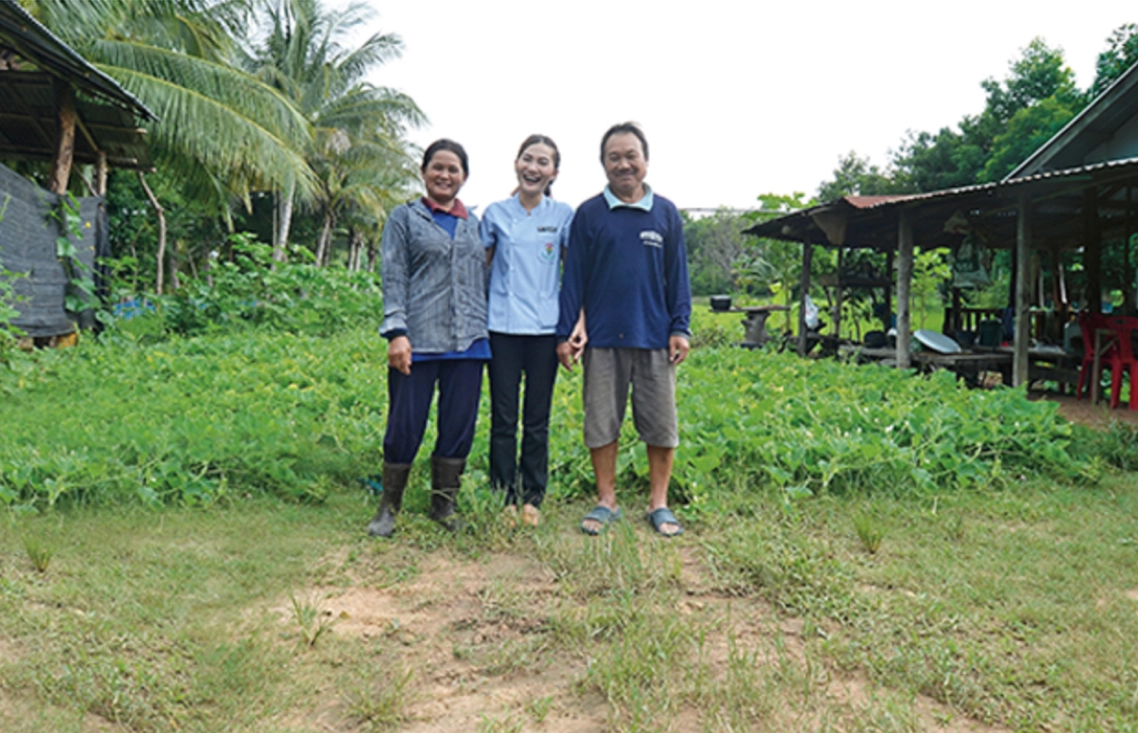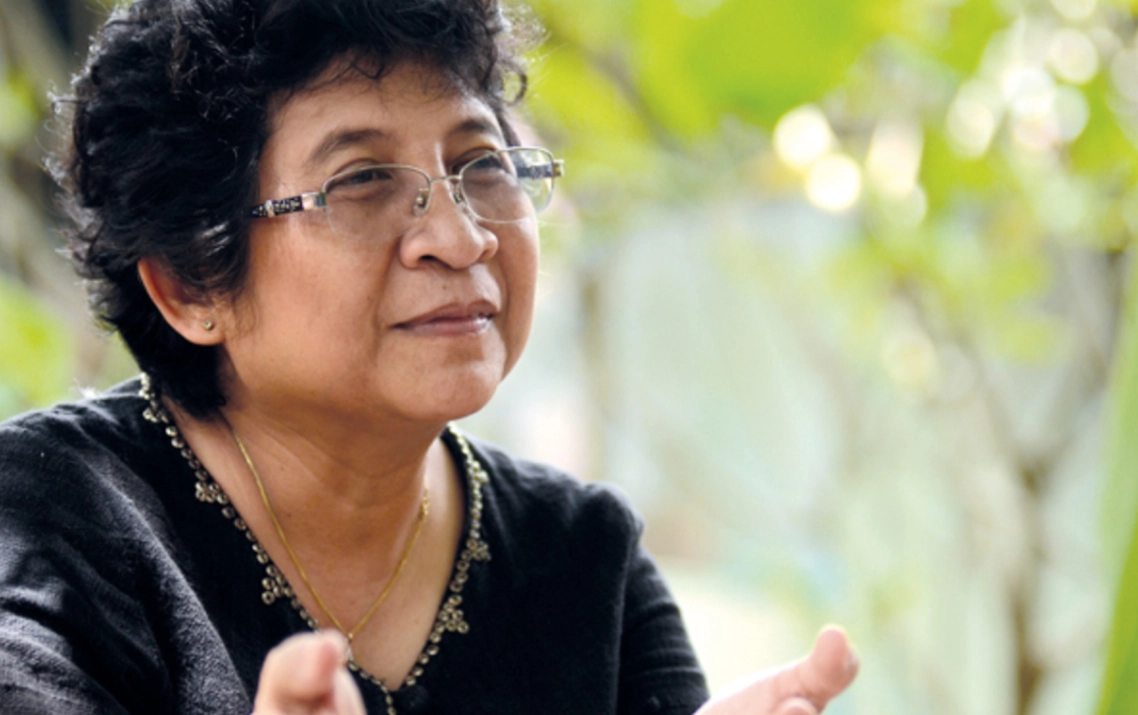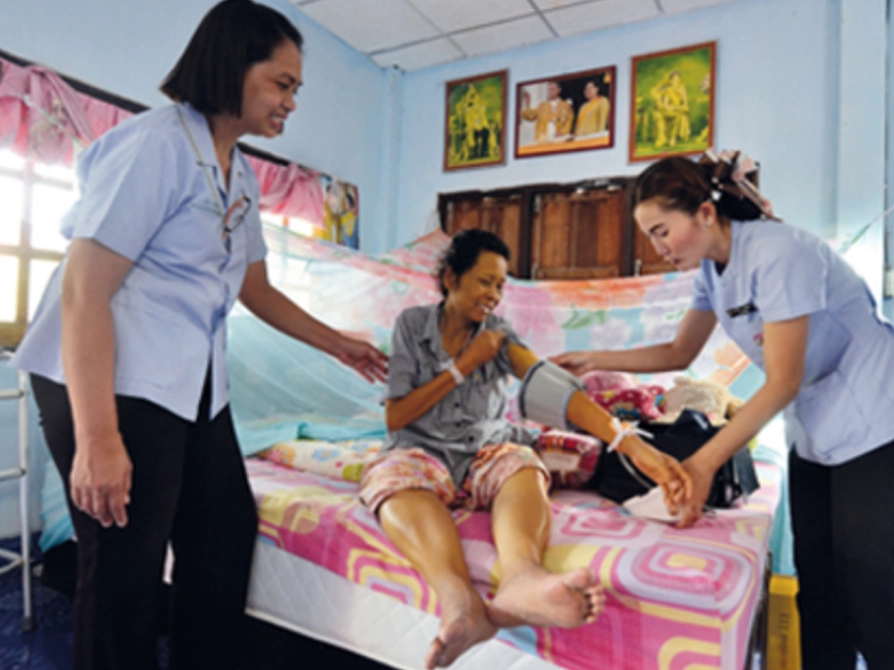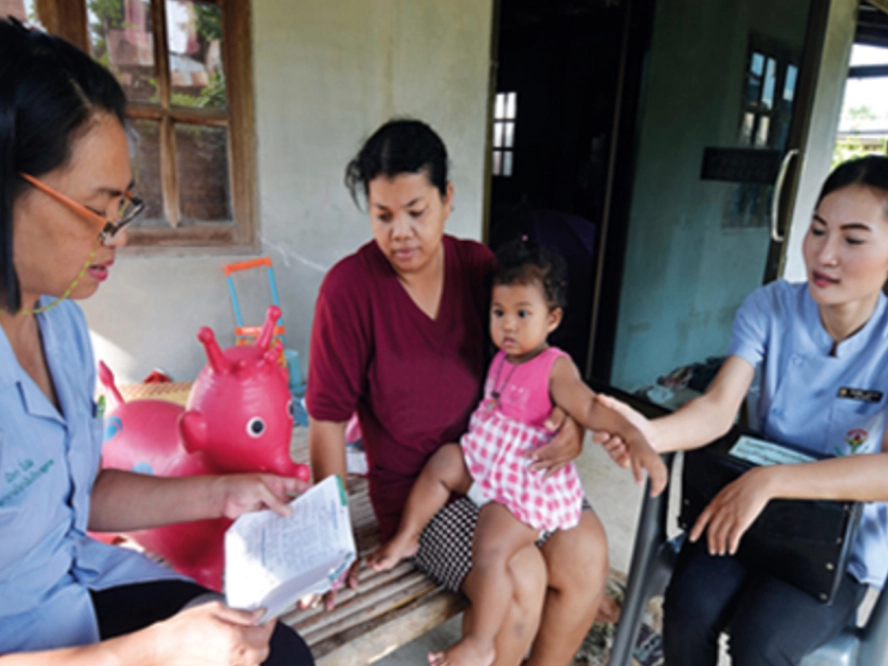

Corporate Social Responsibility Project
Community Nurse Project
Scholarships for Community Nurses: Returning Love to Our Home
“Grandma! The doctor’s here!” A neighbor, upon seeing a woman in a white uniform with a medical bag approaching, calls out to Grandmother Chawee. The old lady, who’s recuperating on her bed, is a resident of Nong Phue village, Thung Pong Sub-district, Ubolratana District, Khon Kaen Province. She was diagnosed with gallbladder cancer three years ago. The “doctor” is the term the villagers use informally to refer to Niparat Anusart, a certified nurse from Ubolratana Hospital. Since Niparat started working at the hospital five years ago, she has regular left her ward once a week to visit Nong Phue Village to give residents advice on medical issues What Niparat does may sound on the surface like an activity of any health volunteer. But the difference is that the nurse is in fact returning to her hometown as a “community nurse” and “homecoming graduate” after she left the village to study nursing in the city. Because the nurses often have close relationships with the patients, there is empathy and understanding, and they can communicate with them without difficulties. These close relationships greatly assist their work as medical workers. Such means general improvement in the community’s health.

Chawee (left) and Niparat (center), grandmother and granddaughter, illustrate the warm relationship between villagers and community nurses who return to work in their hometowns after receiving educational opportunities.
Doing it with Love
The Community Nurse Project of Ubolratana Hospital is a crucial part of the Network of Healthcare System in Ubolratana District, Khon Kaen Province. Not only does address the issue of the lack of nurses, it also reduces the number of young graduates who move out to find work elsewhere. It also provides opportunities for students as young as grades 9 and 10 to start studying to become a nurse. Dr. Thantip Thamrongwarangkul, Secretary General of the Sustainable Community Development Foundation for the Good Quality of Life at Khon Kaen, Ubolratana Hospital, talks about the problem regarding medical personnel in the province. “Most doctors have houses in the city, or they’ve come from other provinces. Nurses represent the largest part of the medical work force, and as many as 98 percent of them came from other areas”. One of the reasons is that local students rarely pass the exam for their desired faculties.

Dr.Thantip Thamrongwarangkul Secretary General of the Sustainable Community Development Foundation for the Good Quality of Life at Khon Kaen, Ubolratana Hospital
In 2006, Ubolratana Hospital initiated the Community Nurse Project. The hospital reaches out at rural schools calling for students who wish to become nurses to apply for the scholarship. Ubolratana Hospital also works with nursing schools at Khon Kaen University, the College of Asian Scholars, and Boromrajonani College of Nursing. PTTEP, has been exploring and producing natural gas at the Sinphuhom Field, contributes financial support.
Jongkolnee Srisud, a freshly graduated nurse, recalls her experience “I joined the program after hearing the advertisement on the village radio. It said the hospital was organizing a volunteer program for children. I always wanted to be a nurse, and I applied for the project”. Jongkolnee was active in the project through her secondary school years. She performed various activities, such as helping nurses record patients’ information, taking blood pressure, observing nurses on their field visits, as well as public relations work. “I’m proud – more than when I was a volunteer. Now I can give injections and treat people before they reach the doctor. It’s hard work but I’m happy.
Being a nurse is not easy but it’s worth,” says Jongkolnee. Jeeraporn Nanongtoom is another graduate of the Community Nurse program. She returned home to work three years ago. “The project allows students with no financial means, or those who love the profession but have average scores – not necessarily outstanding – to have a chance to study nursing. When we graduate, we come back home to work instead of moving to other places.
I’m happy to be able to help my patients”.


Personal familiarity and family relationships help the nurses to perform their duties smoothly, paving the way to better health for the community.
Going Back to their Home
Support and consent from the community is a requisite for candidates. The standards for candidate selection set in 2013 require parents to fully support the students who want to join the program. Another condition set is that parents will receive a budget to plant 100 Yang Na trees, 100 Banana trees and 100 trees to build wood to build houses before their children can go to the nursing school. Once their children are in school, the parents have to sit in adult schools as well. If some of those trees die, they are obliged to replace them. This is a strategy to promote the sufficiency economy and build a strong foundation not only for the children but for the whole family. The idea is to foster a strong community in relation to a proactive healthcare policy.
Nipa Taiso, a professional nurse, explains the importance of field visits “Usually only 25 percent of sick people come to a hospital. The remaining 75 percent stay at home. To visit villages and communities means we can take better care of them. We have to be proactive instead of just passively waiting at the hospital”. Visiting the people in their environment allows community nurses to understand the complex structural problems and to tackle them at their roots. This is the way to ensure a sustainable healthcare provision. Since the beginning of the Community Nurse Project, a number of graduates have devoted themselves to the nursing profession. They look after patients, who actually are their friends or family members whom they have known since they were young. They are proud of their status as professional nurses, an achievement that began when they were just volunteers.
The fabric of love and care woven by the project is an immunity system that better safeguards the community from physical and social illness. To date, 23 nurses under this program who have graduated are working at the area.
Besides, PTTEP has carried out analysis on Social Return on Investment (SROI) of this project by measuring the social impact of the program with the financial quantification calculation (monetization). This method is intended to measure the value of the financial impact of the program that compares to the value of the impact to the cost of the program that has been invested into.
It appears that the value of the SROI ratio is 6.21: 1